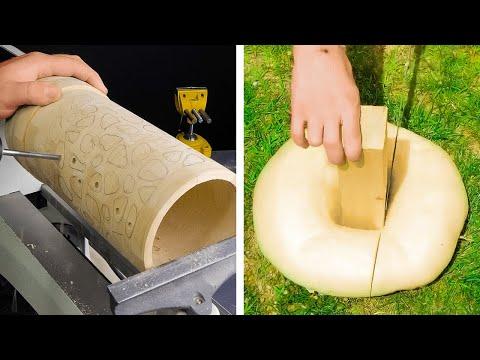Description
What is a carpenter bee? And how can I get rid of carpenter bees naturally? Learn all the carpenter bee things today on Science with Mr. Harris!
0:00 Introduction
0:20 What is a Carpenter Bee?
1:22 What is Boris doing in my backyard?
2:32 How to get rid of Carpenter Bees without killing them
This is Boris. Boris is an Eastern Carpenter Bee, and is a yearly visitor to my house. He spends a couple of weeks in May hovering around my backyard, attacking any other carpenter bees that venture into his territory. What the heck is Boris doing? And what the heck is a carpenter bee and how can I get rid of carpenter bees without killing them!
The second question first. A carpenter bee is a big bee. They’re a group of bee species that include some of the largest bees out there. For this reason they often get confused with bumble bees. Pro tip: you can settle the carpenter bee vs. bumble bee debate because carpenter bees have a shiny abdomen (fancy science word for basically their bee bum) is shiny, whereas bumble bees don’t.
Carpenter bees are different from bumble bees and honey bees in that they don’t live in large hives with other bees. Like bumble bees they don’t make honey, and carpenter bees pollinate lots of plants including ones for vegetable farmers and home gardeners like me.
Carpenter bees are well, carpenters! They nest in wood! They have very sharp mantibles (bee teeth) that can bore through solid wood to create their nests. It works like this. A female carpenter bee, often with 2-3 other female carpenter bee friends, will create a nest in a piece of wood. They start by boring against the grain of the wood, and then turn to go with the grain (its easier), making a long tunnel. They then go about collecting pollen and nectar.
Once they’re collected enough, they begin to lay eggs, which are each provisioned with a sphere of bee bread, a doughy mixture of pollen and nectar, which will feed the baby bee once it has hatched into larvae. Once the egg has been given enough bee bread, the tunnel is sealed up, and a new egg is laid, and so on until the whole tunnel is filled with larvae happily eating bee bread. Once they’ve matured into adults, the new bees bore their way out of the tunnel to begin their lives. Interestingly, the larvae all develop into adult bees at the same time despite being different ages, so they’re all ready to bore their way out at the same time. Usually a carpenter bee nest is made up of 1 female in her second summer, and a small group of other females in their first summer. That’s a carpenter bee! So what the heck is Boris doing hovering in my backyard.
Well, Boris is defending his territory from other male bees of his species. Males establish territory near the nest entrances of females. Once he mates with the female bees, he will promptly die. Sorry Borris.
I think carpenter bees are super cool, and I don’t mind that they live in my shed. Carpenter bees are very unlikely to sting unless handled roughly (think trapped in your clothes), and the males don’t even have a stinger. They are also great pollinators. However some people don’t really like them, and fair enough! How can we get rid of carpenter bees without killing them?
Well, firstly carpenter bees don't really like to dig new tunnels because it's a lot of work to chew through all that wood, and they're likely to return to the same tunnel year after year. One thing you can do is just plug up the carpenter bee hole when they emerge in the spring. This will force them to drill another hole, hopefully somewhere else that is more convenient.
You can also provide them with a sacrificial nesting site. This is kind of like a carpenter bee trap, but a little nicer. An unvarnished and unpainted chunk of raw softwood, like cedar or pine, in a convenient spot with a little overhang will prove irresistible to any carpenter bee looking for a nest. Once they have nested inside, you can simply move the sacrificial piece of wood to a safe place, far away from your home.
Finally, how to protect wood from carpenter bees? Making sure that there is no exposed bare wood on your property by painting and varnishing external surfaces or installing vinyl siding will go a long way towards discouraging these bee friends from setting up shop.
**Side note: we’re talking about the so-called “large” carpenter bees. There are also small carpenter bees that are totally cool too, but they’re so small you probably wouldn’t even notice them in your yard unless you went looking for them. **
Sources
Wilson, Joseph S., and Olivia J. Messinger Carril. The bees in your backyard. Princeton University Press, 2015.
---

























